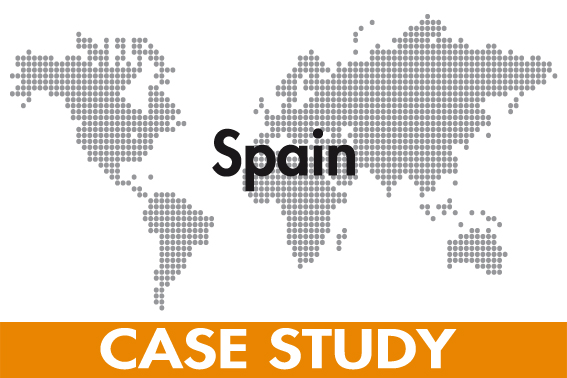Case Study: Spanish broiler growth flat lines

Lower feed prices and an expected higher demand on domestic consumption allowed Spanish broiler production to increase by 10% in 2014. However, production in the country is not expected to continue to grow in 2015 and 2016 due to the current low economic margins received by broiler producers.
Spanish broiler production represents 11.1% of the total EU broiler meat production and the fourth largest producer after Poland, UK and Germany. Official data in 2014 shows the Spanish poultry sector accounts for 15.4% of the final livestock production and almost 6% of final agricultural production.
Number of poultry farms
The number of broiler farms in the country was 4,992 in 2014, a deficit of 0.8% compared to the previous year. This follows the downward trend since 2007, which is seeing more effective and efficient broiler farms.
In addition, producers report that the retail chains are pressing too much on final prices to broiler producers, which is causing the closure of many farms.
Broiler imports in 2014 decreased with 88 MMT CWE or almost 17% lower than the previous year due to an increase in production. For 2015 imports may increase mainly from Portugal, Germany and the Netherlands. Spain’s total exports in 2014 were 140 MMT CWE, 36% higher than previous.
Spanish broiler exports
Intra and extra EU exports grew 37 and 34% respectively, mainly to France, Portugal, United Kingdom, Denmark, Germany and The Netherlands and spectacular increases to South Africa, with 1,064% and 12,300 MT CWE and Vietnam with a growth of 202%. Some African countries like Benin, Togo and Gabon continue to be important for Spanish broiler exports. Exports to Hong Kong also rose 11%.
For 2015 it is estimated to continue with this upward trend of Spanish broiler meat exports intra and extra UE. In 2014 turkey production in Spain amounted to 166,000 tons CWE, 6.4% higher than previous year.
Restructured egg sector
Spain has restructured its egg sector after the implementation of the last Animal Welfare regulation in 2012. The country now has a structural surplus of eggs that in 2014 reached almost 123%.
According to official data from the Spanish Ministry of Agriculture, Food and Environment, MAGRAMA, Spain is the third country in the EU, after Italy and France, in the egg layer census with 44,000 layer hens, thus 13.4% of the total EU census. The Spanish Ministry of Agriculture reports that there are 1,172 egg farms of which 93% are located in enriched cages. Egg production is centered 27% in Castile La Mancha, 17% in Castile Leon, 11% in Aragon and 7% in Catalonia, Valencia and Andalusia.
Fourth largest EU egg producer
In 2014 Spain produced 798,000 tons of eggs, so 1% less than previous year, representing the forth egg producer in the EU after France, Germany and Italy. Official data in 2014 shows the Spanish egg sector accounts for 4.9% of the final livestock production and 1.8% of final agricultural production. Spanish egg per capita consumption 13.1 kg/year, in a downward trend after several years so exports are very important with this production level.
Spain is then a net exporter of eggs and in 2014 exports were up 21% with 187,000 tons, following the upward trend since 2012. Intra EU-28 egg exports grew 20% in 2014 following the upward trend reaching 170,041 tons as well as exports to third countries were up 33% in 2014 reaching 16,701 tons (see Figure below).
In 2014 Spanish table eggs were exported to more than 10 countries in Africa such as Angola, Mauritania, Libya, Guinea Bissau or Liberia, to Asia such as Oman, Israel, UAE or Hong Kong and to America such as Mexico. In addition, in 2015 in response to the avian influenza outbreak in the US and the subsequent demand for eggs in the US market, Spain started exporting eggs to the United States in July 2015. Approximately 6% of Spanish egg exports are currently going to the United States.
Source: USDA













